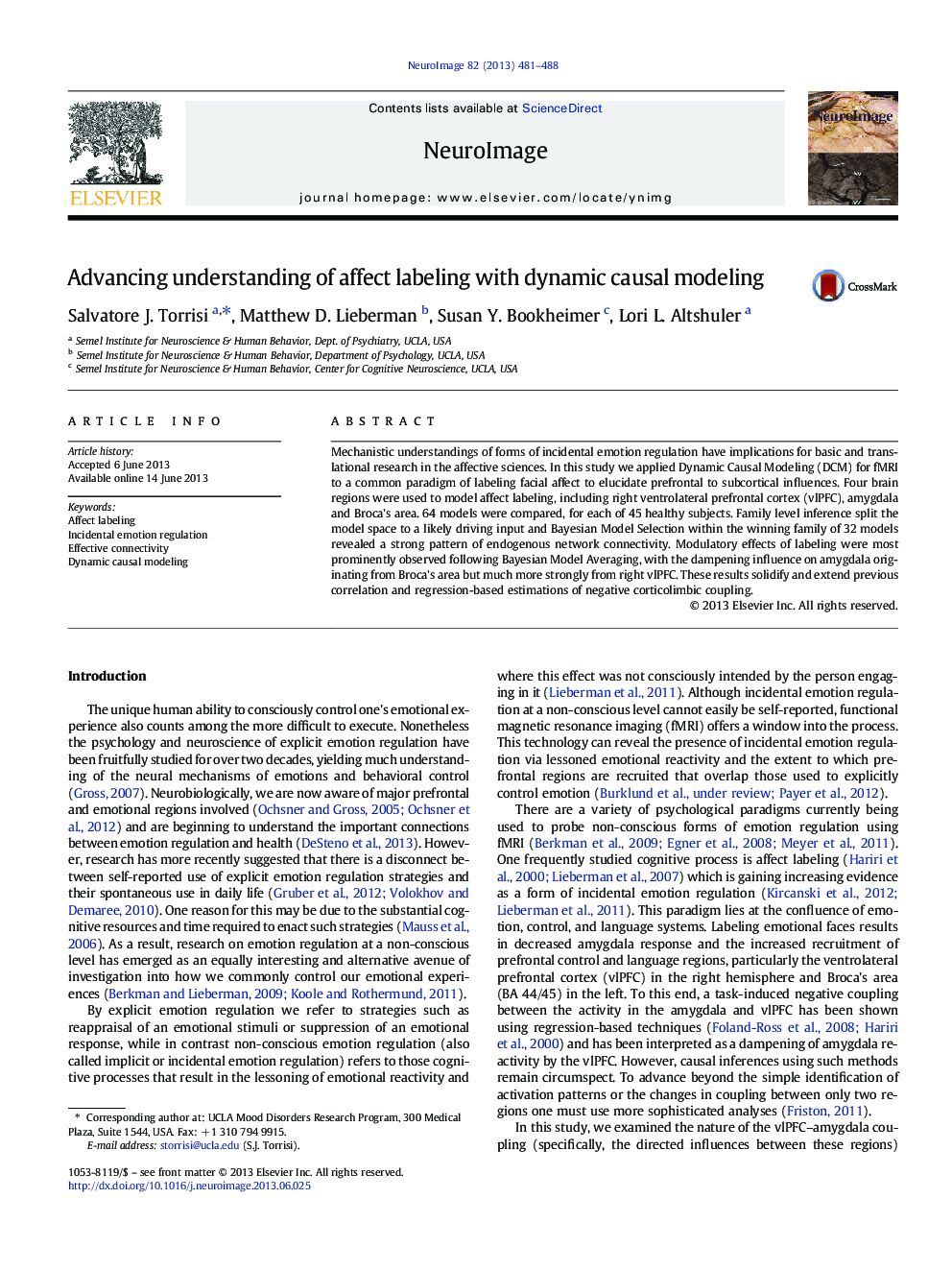| Article ID | Journal | Published Year | Pages | File Type |
|---|---|---|---|---|
| 6028975 | NeuroImage | 2013 | 8 Pages |
Abstract
Mechanistic understandings of forms of incidental emotion regulation have implications for basic and translational research in the affective sciences. In this study we applied Dynamic Causal Modeling (DCM) for fMRI to a common paradigm of labeling facial affect to elucidate prefrontal to subcortical influences. Four brain regions were used to model affect labeling, including right ventrolateral prefrontal cortex (vlPFC), amygdala and Broca's area. 64 models were compared, for each of 45 healthy subjects. Family level inference split the model space to a likely driving input and Bayesian Model Selection within the winning family of 32 models revealed a strong pattern of endogenous network connectivity. Modulatory effects of labeling were most prominently observed following Bayesian Model Averaging, with the dampening influence on amygdala originating from Broca's area but much more strongly from right vlPFC. These results solidify and extend previous correlation and regression-based estimations of negative corticolimbic coupling.
Related Topics
Life Sciences
Neuroscience
Cognitive Neuroscience
Authors
Salvatore J. Torrisi, Matthew D. Lieberman, Susan Y. Bookheimer, Lori L. Altshuler,
